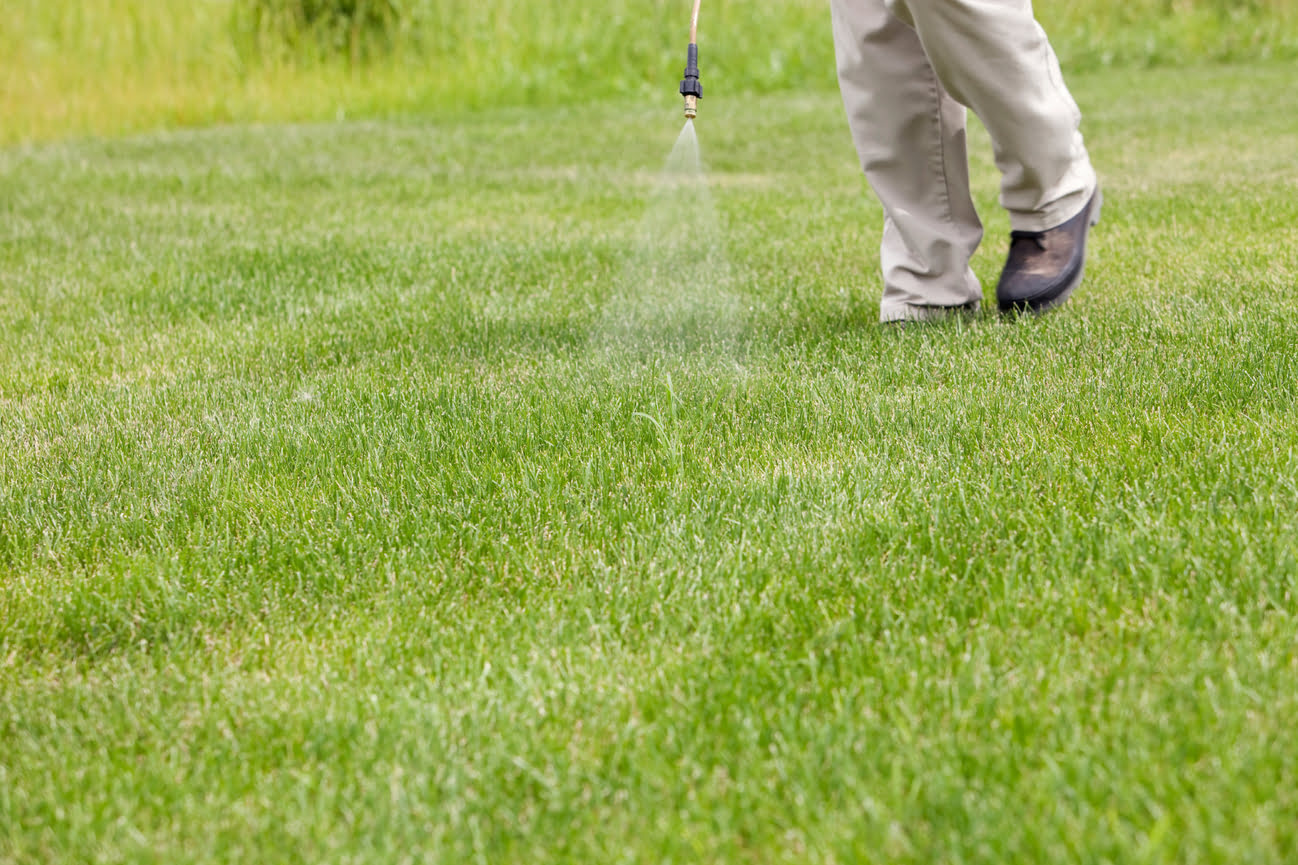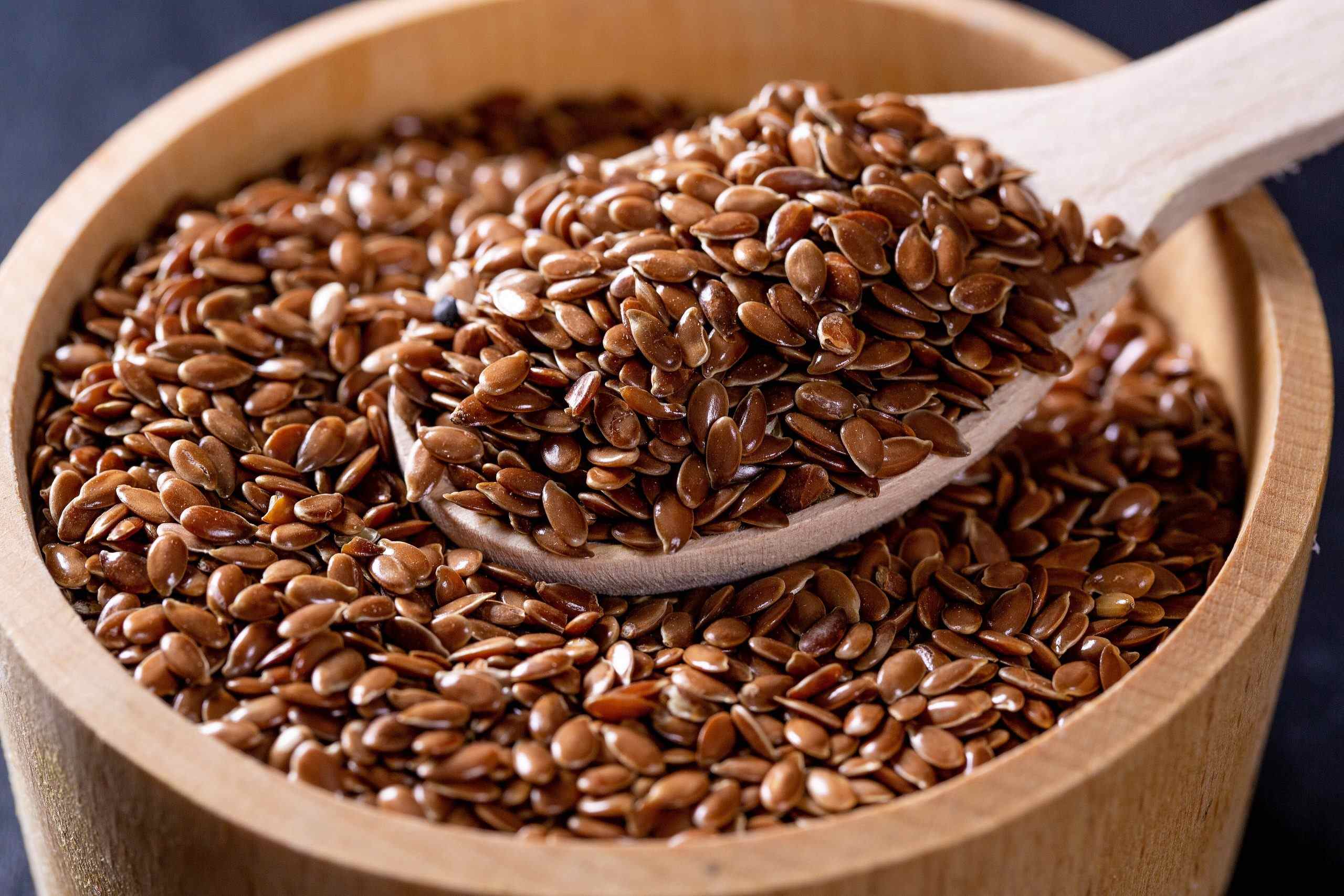Home>Gardening News and Trends>Latest News>How Long Do Pesticides Last On Grass


Latest News
How Long Do Pesticides Last On Grass
Modified: January 22, 2024
Stay updated with the latest news on pesticide longevity on grass. Discover how long pesticides can stay active and protect your lawn.
(Many of the links in this article redirect to a specific reviewed product. Your purchase of these products through affiliate links helps to generate commission for Chicagolandgardening.com, at no extra cost. Learn more)
Table of Contents
- Introduction
- Factors Affecting Pesticide Persistence on Grass
- Types of Pesticides and Their Residual Effects
- Environmental Conditions and Their Impact on Pesticide Lifespan
- Testing and Monitoring Pesticide Residues on Grass
- Health and Environmental Concerns Related to Pesticide Persistence on Grass
- Best Practices for Minimizing Pesticide Residues on Grass
- Conclusion
Introduction
When it comes to maintaining a healthy and vibrant lawn, the use of pesticides is often a necessary step. Pesticides help control and eliminate pests that can damage grass and hinder its growth. However, many homeowners and lawn care enthusiasts have concerns about how long these pesticides last on grass and the potential impact they may have on the environment and human health.
Understanding the persistence of pesticides on grass is crucial for making informed decisions about their use and taking appropriate precautions. Pesticides are designed to remain effective for a specific duration, allowing enough time for them to tackle the targeted pests. However, factors such as the type of pesticide, environmental conditions, and application methods can influence how long they last on the grass.
Efforts to minimize pesticide residue on grass have led to the development of newer, more eco-friendly formulations. Additionally, strict regulations and monitoring programs have been implemented to ensure the safety of pesticide use. In this article, we will explore the factors that affect pesticide persistence on grass, the different types of pesticides and their residual effects, the impact of environmental conditions, and the best practices for minimizing pesticide residue. Let’s delve into the intricacies of pesticide lifespan and its implications for lawn care.
Factors Affecting Pesticide Persistence on Grass
The longevity of pesticides on grass can vary widely depending on several factors. Understanding these factors is crucial for effectively managing pesticide applications and minimizing their potential adverse effects. Here are some key factors that influence the persistence of pesticides on grass:
- Pesticide Formulation: The formulation of the pesticide plays a significant role in its persistence on grass. Different types of pesticides, such as liquid concentrates, granules, or aerosols, have varying rates of degradation and adherence to the grass surface. For example, systemic pesticides are absorbed by the plant and may persist for a longer duration, while contact pesticides have a shorter lifespan as they remain on the surface.
- Chemical Properties: The chemical properties of the pesticide, such as its solubility, volatility, and stability, can impact its persistence on grass. Pesticides that are highly soluble in water may be more prone to leaching and runoff, resulting in shorter persistence on the grass. Volatile pesticides, on the other hand, can easily evaporate and dissipate, reducing their lifespan on the grass. Stability refers to the pesticide’s resistance to degradation, with more stable compounds lasting longer.
- Application Rate and Mode: The rate and method of pesticide application can affect its persistence on grass. Under or over-application can lead to ineffective pest control or higher residues respectively. Factors such as spray coverage, droplet size, and uniformity of application are crucial for proper pesticide distribution and adhesion to the grass surface.
- Environmental Conditions: Environmental factors play a significant role in determining the persistence of pesticides on grass. Temperature, humidity, sunlight exposure, and rainfall can all influence the degradation and movement of pesticides. Higher temperatures and increased sunlight can accelerate pesticide breakdown, while excessive rainfall or irrigation may result in leaching and runoff.
It is important to consider these factors when selecting and applying pesticides to ensure optimal efficacy and minimize environmental impact. Understanding how these factors interact can help make informed decisions and adopt appropriate practices for pesticide management in lawn care.
Types of Pesticides and Their Residual Effects
Pesticides come in various types, each with its own mode of action and residual effects on grass. Understanding these types can help determine the appropriate pesticide for specific pest control needs and manage residue levels effectively. Here are some common types of pesticides and their residual effects:
- Insecticides: Insecticides are designed to control and eliminate insects that can damage grass. They can have varying residual effects, ranging from short-term to long-term persistence. Systemic insecticides, which are absorbed by the plant, can provide longer protection as they move throughout the plant and remain effective against pests for an extended period. Contact insecticides, on the other hand, have a shorter residual effect as they only affect pests that come into direct contact with the treated grass.
- Herbicides: Herbicides are used to control unwanted weeds in the lawn. Some herbicides have a selective mode of action, targeting specific types of weeds while leaving the grass unharmed. These selective herbicides often have a shorter residual effect, allowing for reseeding or overseeding of grass relatively quickly. Non-selective herbicides, which kill all vegetation they come into contact with, can have a longer residual effect and may require reseeding to establish new grass.
- Fungicides: Fungicides are used to prevent and control fungal diseases that can affect grass. Their residual effects can vary depending on the specific fungicide used and the environmental conditions. Some fungicides provide protection for a limited period, requiring repeated applications to maintain control, while others offer longer lasting protection against fungal pathogens.
- Plant Growth Regulators (PGRs): PGRs are used to regulate the growth and development of grass. They can have both short-term and long-term residual effects. PGRs that inhibit grass growth may require more frequent applications to maintain the desired growth suppression, while others with longer residual effects may provide longer-lasting growth regulation.
It is important to carefully read and follow the label instructions of pesticides to understand their residual effects and any restrictions on reapplication or reseeding. By selecting the appropriate pesticide type and understanding its residual effects, you can effectively manage pest control while minimizing any negative impact on your grass and the environment.
Environmental Conditions and Their Impact on Pesticide Lifespan
Environmental conditions play a crucial role in determining the lifespan of pesticides on grass. Factors such as temperature, humidity, sunlight exposure, and rainfall can influence the degradation, movement, and persistence of pesticides. Understanding these conditions is essential for optimizing pesticide efficacy and minimizing their potential adverse effects. Here are the key environmental conditions and their impact on pesticide lifespan:
- Temperature: High temperatures can accelerate the breakdown and degradation of pesticides. Heat can increase the reaction rates of chemical processes, leading to faster pesticide degradation. Conversely, colder temperatures can slow down the degradation process and extend the lifespan of pesticides on grass. It is important to consider temperature conditions when timing pesticide applications to ensure optimal effectiveness.
- Humidity: Humidity can affect pesticide persistence by influencing the rate of evaporation or hydrolysis. In high humidity conditions, pesticides may take longer to evaporate, resulting in longer persistence on grass. Conversely, low humidity levels can lead to faster evaporation and shorter pesticide lifespan on the grass surface.
- Sunlight Exposure: Sunlight can also impact the lifespan of pesticides. Ultraviolet (UV) radiation from sunlight can degrade certain types of pesticides, particularly those that are sensitive to light. Pesticides that are exposed to direct sunlight may break down more quickly, reducing their residual effects and requiring more frequent applications.
- Rainfall: Rainfall or irrigation can significantly influence the movement and persistence of pesticides on grass. Excessive rainfall or over-irrigation can result in pesticide runoff and leaching, causing them to move away from the grass surface. This can reduce the pesticide’s effectiveness and increase the risk of contamination of nearby water bodies. On the other hand, limited rainfall or drought conditions can result in longer pesticide lifespan on the grass.
Considering these environmental conditions is crucial when planning pesticide applications. Timing the application during favorable conditions, such as moderate temperatures and lower humidity, can maximize pesticide effectiveness and minimize their impact on the environment. Additionally, being mindful of weather forecasts and adjusting application schedules accordingly can help mitigate the risk of pesticide runoff and optimize their performance on grass.
Testing and Monitoring Pesticide Residues on Grass
Testing and monitoring pesticide residues on grass is essential to ensure the safety of the environment, human health, and wildlife. These practices help determine the effectiveness of pesticide applications, identify potential risks, and guide appropriate management strategies. Here are some key aspects of testing and monitoring pesticide residues on grass:
- Laboratory Analysis: Laboratory analysis is a common method used to measure pesticide residues on grass. Samples of grass can be collected before and after pesticide applications to assess residue levels. These samples are then sent to accredited laboratories equipped with specialized equipment for pesticide residue analysis. The laboratory analysis provides quantitative data on residue concentrations, allowing for a better understanding of the pesticide’s persistence and potential risks.
- Sampling Techniques: Proper sampling techniques are crucial to obtain representative samples for pesticide residue analysis. Randomly selecting multiple locations within the designated area and collecting grass samples at different depths can provide a more accurate representation of the residue levels. It is important to follow standardized sampling protocols and ensure proper sample handling and storage to maintain sample integrity until analysis.
- Regulatory Limits: Regulatory agencies establish maximum residue limits (MRLs) for pesticides on various crops and in the environment. These limits are designed to protect human health and the environment from excessive pesticide exposure. Testing pesticide residues on grass helps identify if the residue levels exceed the regulatory limits and prompts corrective actions to ensure compliance.
- Integrated Pest Management (IPM): Monitoring pesticide residues on grass is an integral part of an integrated pest management (IPM) approach. IPM focuses on using multiple pest control strategies while minimizing pesticide use. Regular monitoring of pesticide residues allows for proper evaluation of the effectiveness of non-chemical pest control methods and adjustments in pesticide applications when necessary.
- Public Safety and Awareness: Testing and monitoring pesticide residues on grass contribute to public safety and awareness. By ensuring that pesticide residues on grass are within acceptable levels, potential health risks to individuals, pets, and wildlife can be minimized. Sharing the results of pesticide residue monitoring with the public promotes transparency, increases awareness about responsible pesticide use, and encourages adoption of eco-friendly lawn care practices.
Testing and monitoring pesticide residues on grass are critical steps in managing and mitigating the potential risks associated with pesticide use. It enables informed decision-making, promotes responsible pesticide management, and protects the environment and human health from excessive exposure to pesticides.
Health and Environmental Concerns Related to Pesticide Persistence on Grass
Concerns about the health and environmental impacts of pesticide persistence on grass have gained significant attention in recent years. Pesticides, when used improperly or in excessive amounts, can pose risks to human health, wildlife, and the surrounding ecosystem. Here are some key health and environmental concerns associated with pesticide persistence on grass:
- Human Health Effects: Pesticides residues on grass have the potential to come into contact with humans, particularly children and pets who may play or come in direct contact with the treated grass. Prolonged exposure to pesticides can lead to various health issues, including skin irritation, respiratory problems, and even more severe health conditions over time. Minimizing pesticide residues on grass is crucial to reducing the risk of human exposure.
- Water Contamination: Pesticides can leach into the soil and contaminate groundwater or runoff into nearby water bodies. This can result in the contamination of drinking water supplies and aquatic ecosystems, affecting wildlife and fish populations. It is essential to manage pesticide applications carefully to prevent water contamination and preserve water quality.
- Harmful Effects on Non-Target Organisms: Pesticides can have unintended impacts on non-target organisms such as beneficial insects, birds, and pollinators. Persistent pesticides in the grass can be ingested by insects or birds, leading to adverse effects on their populations. This can disrupt the natural balance of ecosystems and have far-reaching consequences on biodiversity.
- Resistance Development: Continuous reliance on pesticides can lead to the development of pest resistance. Persistent and repeated use of the same pesticide can result in targeted pests developing resistance, rendering the pesticide less effective over time. This may require higher pesticide application rates or switching to different, potentially more harmful, pesticides.
- Long-term Environmental Impact: Pesticides that persist in the environment can have long-term ecological implications. Some pesticides have been found to have persistent effects on soil microorganisms, potentially disrupting soil health and nutrient cycles. This can impact the overall productivity and sustainability of the ecosystem in the long run.
Addressing these concerns requires adopting responsible pesticide management practices. This includes proper application techniques, adherence to label instructions, and considering alternative pest control methods that are more environmentally friendly. Regular monitoring of pesticide residues on grass and implementing integrated pest management strategies can help mitigate these concerns and promote a healthier and more sustainable approach to lawn care.
Best Practices for Minimizing Pesticide Residues on Grass
Minimizing pesticide residues on grass is a crucial aspect of responsible lawn care and environmental stewardship. By adopting best practices, homeowners and lawn care enthusiasts can effectively manage pests while reducing the potential risks associated with pesticide use. Here are some key practices for minimizing pesticide residues on grass:
- Integrated Pest Management (IPM): Implementing an integrated pest management approach can significantly reduce the reliance on pesticides. IPM focuses on combining multiple pest control strategies, such as cultural practices, biological controls, and targeted pesticide use when necessary. This can help prevent pest infestations and minimize the need for frequent pesticide applications.
- Proper Application Techniques: Following proper pesticide application techniques is essential to ensure adequate pest control and minimize pesticide residues. This includes calibrating equipment, using the correct dosage, and applying pesticides during optimal weather conditions. Applying pesticides when wind speeds are low can reduce drift and unintended deposition on non-target areas.
- Targeted Application: Limiting pesticide applications to the affected areas rather than broadcasting them across the entire lawn can help reduce overall pesticide use and minimize residues. Spot-treating specific areas where pests are present can be more effective and targeted, reducing the potential for unnecessary exposure.
- Timing: Timing pesticide applications correctly can minimize residues and potential risks. Applying pesticides during periods of minimal human and animal activity, such as early morning or evening, can reduce direct contact and exposure. Avoiding application prior to rainfall or irrigation can also help prevent runoff and leaching.
- Alternative Pest Control Methods: Exploring alternative pest control methods can help minimize pesticide use and residues. For example, cultural practices such as proper mowing height, regular watering, and adequate nutrient management can promote a healthy lawn and reduce pest susceptibility. Additionally, introducing beneficial insects, natural predators, or using organic pesticides can provide effective pest control with minimal residues.
- Follow Label Instructions: Always read and follow the label instructions when using pesticides. The label provides crucial information on proper application rates, timing, safety precautions, and potential restrictions. Adhering to these instructions ensures safe and effective use while minimizing pesticide residues.
- Regular Monitoring: Regularly monitoring the lawn for signs of pests helps detect problems early on before they escalate. This allows for prompt action and targeted treatments, reducing the need for widespread pesticide use. Monitoring can also help evaluate the effectiveness of non-chemical pest control methods, providing valuable insights into overall lawn health.
By implementing these best practices, homeowners and lawn care enthusiasts can promote a healthy and thriving lawn while minimizing pesticide residues. Responsible pesticide management not only protects the environment and human health but also contributes to a more sustainable approach to lawn care.
Conclusion
Pesticide persistence on grass is a topic of growing concern due to the potential impacts on human health, the environment, and wildlife. Understanding the factors that affect pesticide lifespan, such as the type of pesticide used, environmental conditions, and application techniques, is crucial for responsible lawn care practices. By selecting the right pesticide, timing applications appropriately, and following proper application methods, it is possible to minimize pesticide residues on grass.
Testing and monitoring pesticide residues on grass help ensure the safety of the environment, public health, and wildlife. By regularly assessing residue levels and complying with regulatory limits, we can minimize the potential risks associated with pesticide use. Integrated pest management (IPM) approaches, which combine multiple pest control methods, can effectively manage pests while reducing dependency on pesticides and their residues.
Adopting best practices, such as proper application techniques, targeted treatments, and exploring alternative pest control methods, allows for better pest control management and decreases the overall impact of pesticides on grass. Additionally, following label instructions, regular monitoring, and promoting public awareness contribute to responsible pesticide management and the preservation of a healthy ecosystem.
By integrating these practices into lawn care routines, we can strike a balance between managing pests and minimizing pesticide residues on grass. Responsible pesticide management not only protects the environment but also ensures the safety of our families, pets, and surrounding wildlife. Let us embrace sustainable lawn care practices that prioritize the health and longevity of our lawns and the planet.








